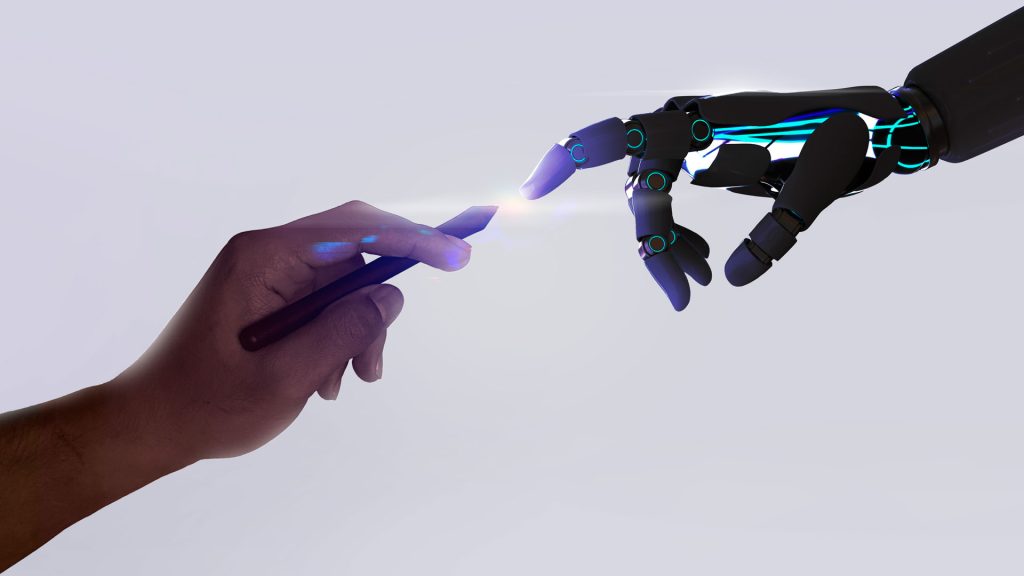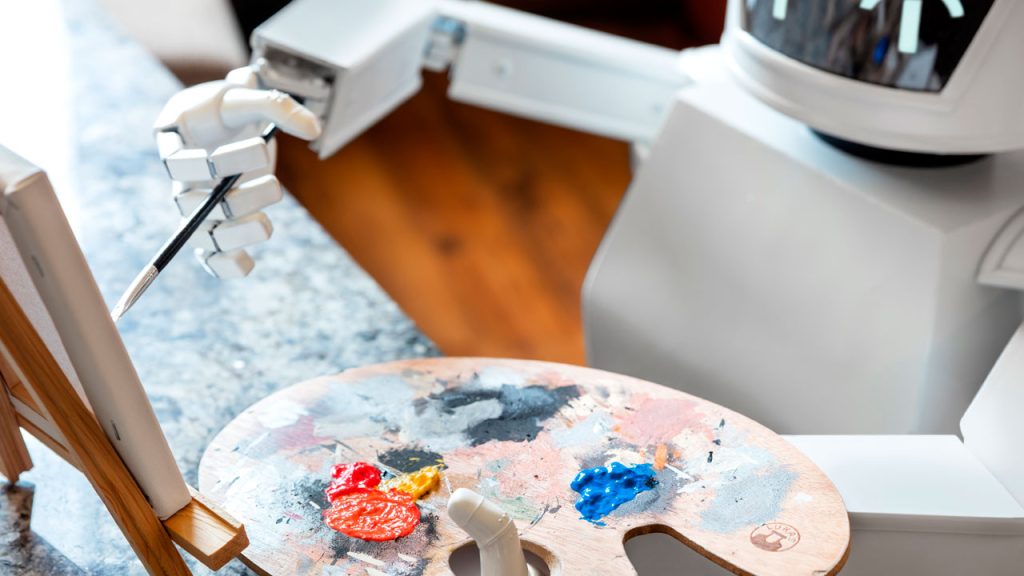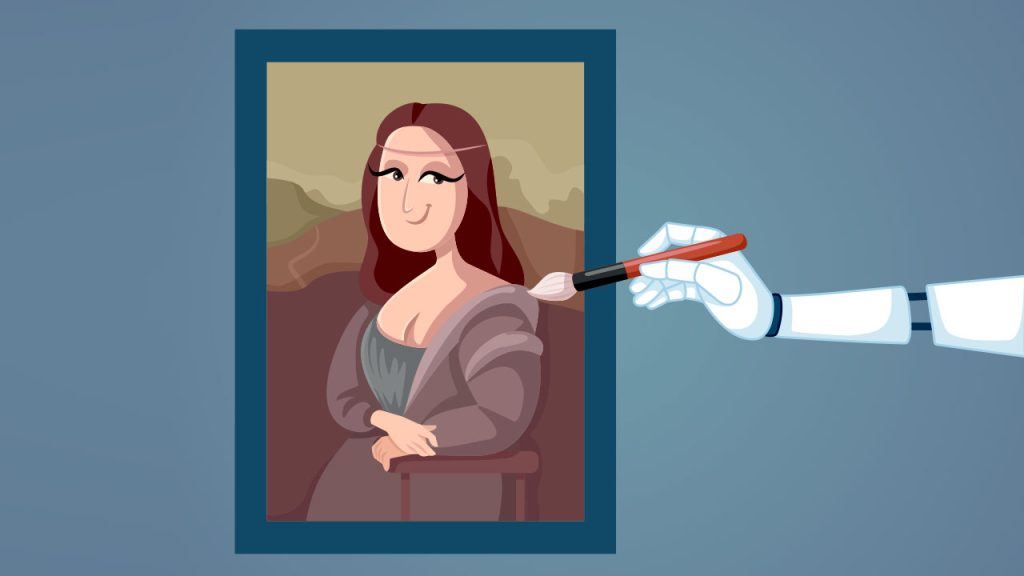
Is it possible to register the copyright of a work created with Artificial Intelligence?
In recent years some artists have decided to experiment with new technologies to try other creative paths and create new works. This has generated some controversy and, in turn, opened a topic of debate: copyright and Artificial Intelligence (AI).
One of the certainties we know is that technology has changed many aspects of our lives, creating new habits. From simple routines such as getting up and asking a virtual assistant for a cup of coffee, to more complex ones such as determining the production of an industrial factory. Two things that are possible, and happen every day, thanks to Artificial Intelligence.
It was only a matter of time before AI reached culture, art and creativity. And it has done so in a big way. Filling the minds of creators with ideas and possibilities, but also raising some doubts at the legal and theoretical level.
For this reason, in today’s article we want to talk about how Artificial Intelligence intervenes in the creation of works and what implications it has on copyright, as well as share our point of view. Let’s get started!
Create a work with Artificial Intelligence
The title Artificial Intelligence and Copyright may sound very futuristic, but the truth is that it is already part of the present. Technology has been integrated into the creative work of an author for more than 40 years. Let’s remember that since 1970 computers have served as an instrument to produce works of art. And they continue to do so today. For example, an illustrator uses a computer program installed on his computer to create one of his artistic works.
The dilemma comes when the machine no longer needs human intervention to create the work, but does it through a mathematical algorithm. An algorithm that has been developed by a person, yes, but at the moment of execution, the machine has been the sole creator. At this point, the issue of the protection of the work also comes into play. Who owns the copyright? To resolve this question, let’s talk about Artificial Intelligence in Copyright.

Artificial intelligence and copyright
Copyright and Artificial Intelligence can raise a series of doubts that we are going to solve for you right now. To begin with, when we talk about this new technology, the first thing we should ask is, is there a law that regulates Artificial Intelligence? At the moment, at the beginning of the year 2023, no. It does not exist. As is often the case in the technology sector, progress advances by leaps and bounds and, almost always, legislation lags a bit behind until it is updated.
Since there is no principle that contemplates this assumption, we go directly to the Copyrights Laws which state that “the natural person who creates a literary, artistic or scientific work is considered an author”. Here we already have one of the keys and that is that the human genre is expressly mentioned, which means that for a work to be registered, the creative process must be linked to a natural person.
In addition, as might be expected, there have been cases of copyright and Artificial Intelligence that have ended up in court and have established jurisprudence. One of the most mediatic was that of Steve Thaler, Ph.D. in physics, last 2022 in the United States, who wanted to register a computer-generated work as a work for hire. To which the United States Copyright Registration Office (USCO) ruled that a work cannot be copyrighted if there has been no human intervention.
Is it possible to register a work elaborated with Artificial Intelligence?
Taking into account the above, the quick answer would be: yes, as long as there is a clear intervention of a human being and the creative process is linked to a physical person. But let’s go into details.
As specified in the laws of different countries, only works created by a human being can be protected by copyright. This means that Artificial Intelligence should be considered as a support, instrument or tool for the creation of the original work. Let’s take an example to make it clearer. If the work has been created by a machine from an algorithm that you have developed, you would not be the author of the work, since the creation itself has been made by the machine.
Let us not forget that Intellectual Property is associated with any creation of the human mind and, therefore, the objective of the Intellectual Property Law is to protect the rights of the authors of scientific, literary or artistic works. So if the human mind is not involved in the creative work, the work cannot be protected by copyright.

What would be our recommendation? As you know, for us one of the most important aspects is to protect the author, so the best advice we can give you is to register all your works to generate a proof of authorship. This way, if in the future you need to provide evidence that a work on which Artificial Intelligence has been based is yours, you will always be able to prove it.
To make this process quick and easy, Safe Creative has an express registration system 100% online. All you have to do is register, upload the file of your work, fill in some fields and that’s it! You will receive an email with all the registration information and a certificate of authorship registration.
In case you have detected a possible plagiarism of your work and you need to know how to act, read our article what to do in case of plagiarism, it will be very useful.
In any case we are yet to see what will happen when artificial intelligences are instructed by an artist in his own style, and it can be precisely defined that the specific changes introduced by the artist himself in the resulting works could be, finally, considered works of that same author, although he has not executed, for example, the painting, analogous to how are the algorithms of mobile cameras that interpret and alter the color temperature, saturation or contrast of the images that are taken and the filters that can be applied. We are talking about an argument close to the image processing algorithms, for example, that exist in image processing and that use the capabilities of artificial intelligences to a greater or lesser extent.
